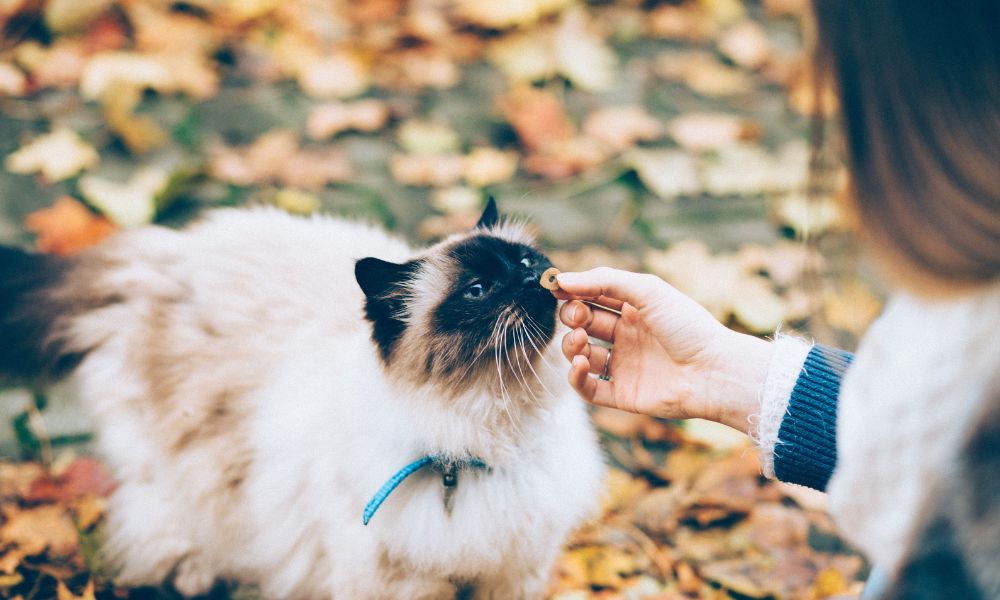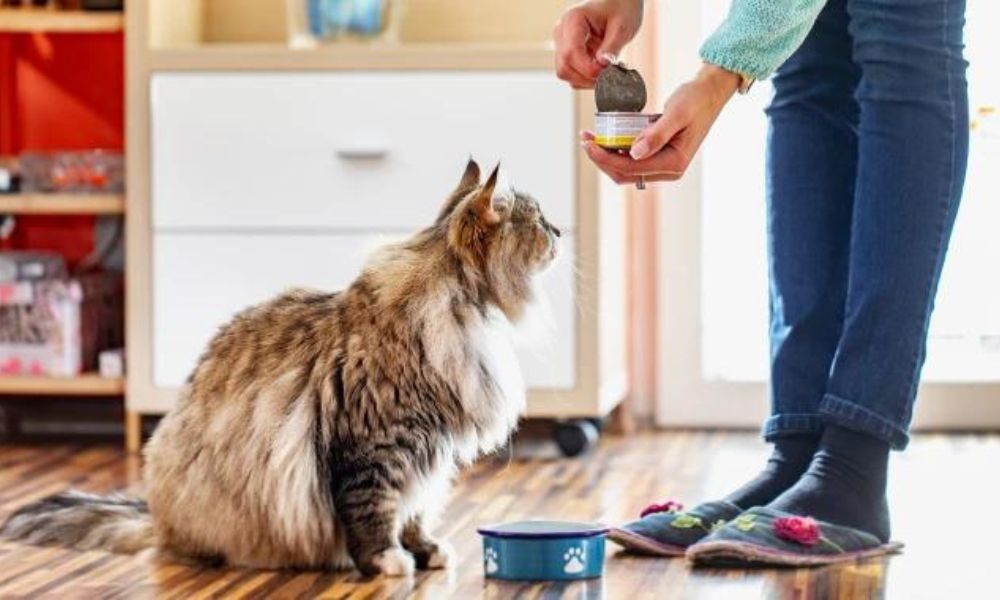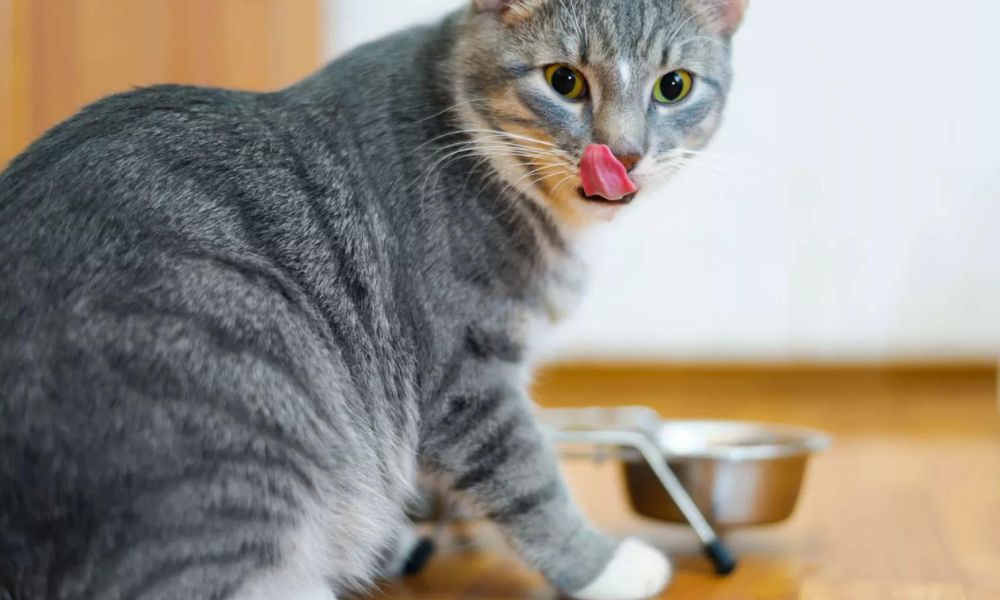
How Much Wet Food Should I feed My Cat?
Whether you’re a first-time cat owner or your cat’s diet has changed, determining how much food your cat needs daily might be challenging. After all, each cat is special.
After selecting the ideal wet food, you must determine how much to give your cat. The number of calories and serving sizes in dry and wet cat food are different. Whether you feed dry, wet, or a combination of the two, you need to make sure you’re giving the right amount of food. There are general recommendations for how much wet food to feed cats of every size and shape. If you are wondering “how much-wet food should I feed My cat” – this article is here to help you out!
Defining Healthy Cat Food

The typical adult cat should weigh around 10 pounds and require between 1/3 and 1/2 a cup of food daily. That is approximately 250 calories.
Your cat’s food needs to be appropriately balanced concerning the six basic nutrient groups: proteins, fats and oils, minerals, vitamins, carbohydrates, and water. This essential nutritional balance should be present in all high-quality cat foods. Never neglect to determine whether your cat is allergic to any particular ingredients, and avoid feeding it cat food that contains them.
Just as each cat has its personality, so will your cat’s perfect food portion size. How much food your cat will need might depend on several variables, including age, size, health, and more. To ensure that your cat is receiving the right number of calories when you feed a combination of wet and dry food, you may need to do some math. Looking at the suggested daily feeding levels for each food category and halving them is a simple place to start.
How Much Wet Food Should I Feed My Cat?

Wet food is not an occasion-only delicacy or a special dinner. Wet food is preferable to dry or semi-moist food for cats’ digestive systems, therefore they can and should consume it every day.
The average cat needs 4-5 ounces of canned food daily. When trying to precisely control the number of calories ingested each day, pate-style kinds are often higher in calories per can than the varieties that more closely mimic human meals with pieces and gravies.
The number of calories your cat needs depends on a variety of things. You can get a general idea of how much to feed your cat based on its weight. Yet, it’s important to assess your cat’s physical health. A cat with a large frame and lean muscles may weigh 15 pounds and be in good health. For this cat to stay at a healthy weight, additional calories will be needed. A 15-pound cat with a smaller physique, however, will be overweight and require fewer calories. Instead of feeding the overweight cat based on its actual weight, do so according to its desired weight.
The appropriate calorie intake depends on a cat’s age and degree of exercise. Compared to an adult or senior cat, a growing kitten requires a lot more calories. A cat that is frequently active and plays and runs around will require more calories than a cat that spends the majority of its time sitting still. To create milk and maintain her health during nursing, a mother requires more calories.
Why Does Your Cat Need Wet Food?

The majority of the entire diet of cats should be made up of wet food, according to many vets. There are several causes for this.
- Nutritional Value: Because they are obligate carnivores, cats were not made to consume large amounts of carbohydrates (if any). By default, dry food will have significantly more carbohydrates than wet food. The use of dry food contributes to obesity in many cats. Compared to dry food, high-quality wet food often has fewer carbohydrates and more animal protein. Instead of overly processed dairy, legumes, or animal derivatives, which are frequently the main protein sources in kibbles, cats benefit when they can absorb critical elements from whole meat.
- Taste and Hygiene: Wet food is more appetizing to cats than dry food because it typically contains actual meat and animal fat. Even with stringent safety precautions, handling and storing raw food from the human supply chain can result in bacterial infection. The risk of infection with wet food is virtually nonexistent because it is manufactured from cooked meat that is packaged in sterile cans.
- Hydration: Because they don’t drink a lot of water, cats frequently teeter on the verge of dehydration. Wet food naturally contains more water than dry food in the diet, which benefits the urinary system, kidneys, and general health. The amount of water required by cats is 50 milliliters per kilogram of body weight. Since wet food includes between 70 and 80 percent moisture, cats who eat it every day don’t become dehydrated, which helps them prevent urinary and renal conditions including cystitis, bladder stones, chronic kidney disease, etc.
Besides, dry food interferes with your cat’s natural digestive strength since it contains cheap, difficult-to-digest vegan foods including grains, soybeans, veggies, and potato or rice starch. Constipation, food intolerances, bowel disorders, and stomach sensitivities can all result from frequent eating.
So, it is always a wise decision to feed your cat wet foods when needed. Among the many brands of cat food available on the market are Brit Cat Food, Versele Laga Lara Cat Food, Drools Cat Food, Reflex Plus Cat Food, Me-O Cat Treats, and others.
Conclusion
Although giving cats only wet food is ideal, some cats prefer dry food and will under-eat if they only get wet food. Also, feeding some of your diets dry will be easier on your wallet because dry food is more affordable. You can always consult your veterinarian for the best combination of wet and dry cat food.
Find the best deals on both dry and wet cat food in Pet Zone BD! You will never have to worry about the safety of your cat’s health because Pet Zone always ensures top-quality cat food.
